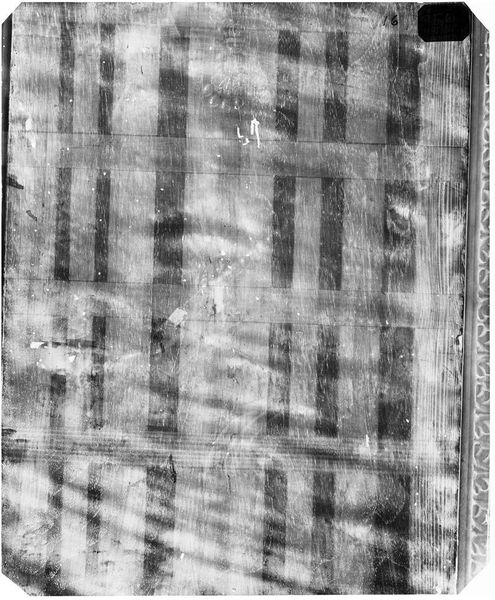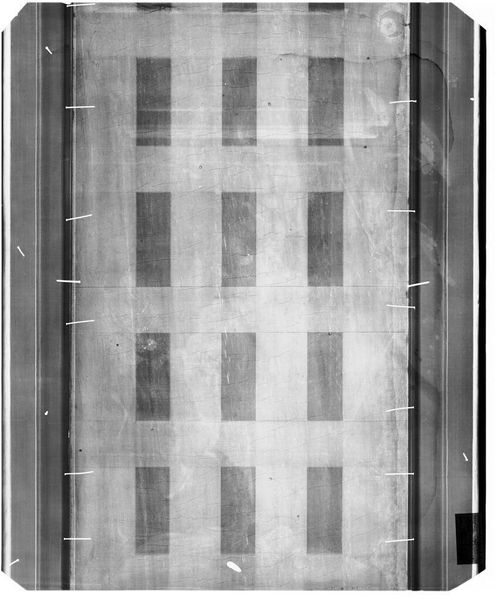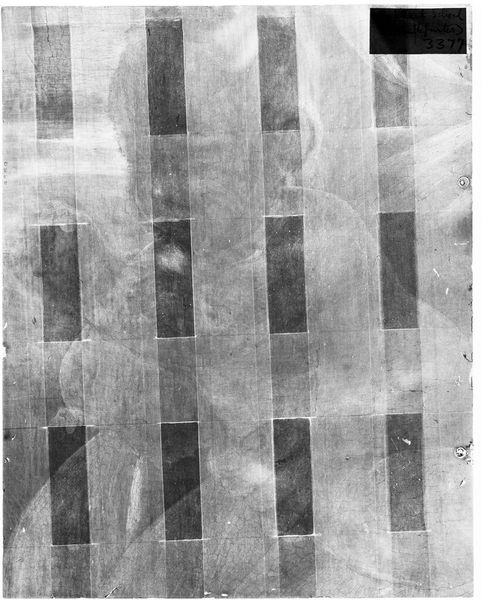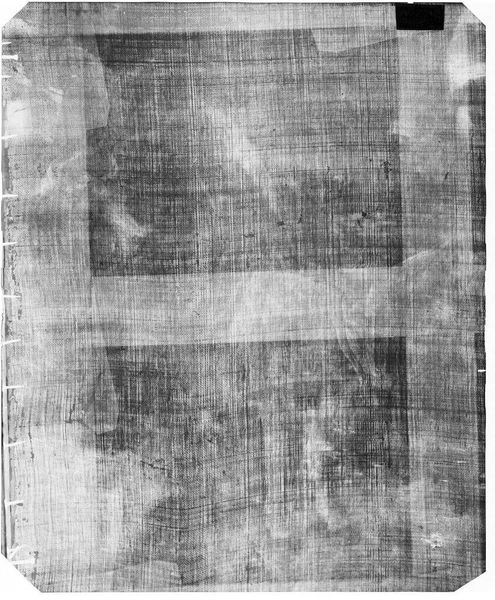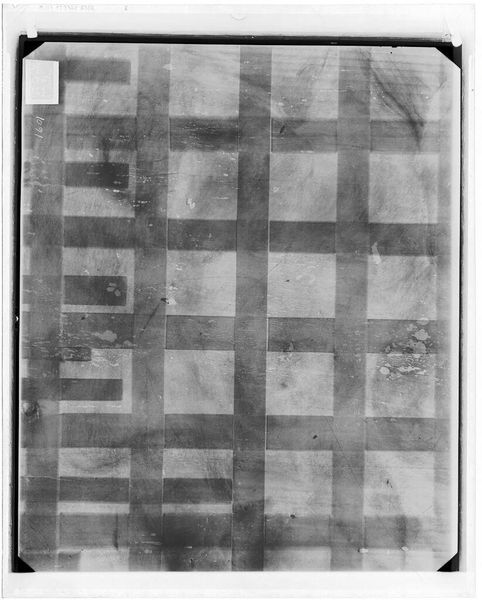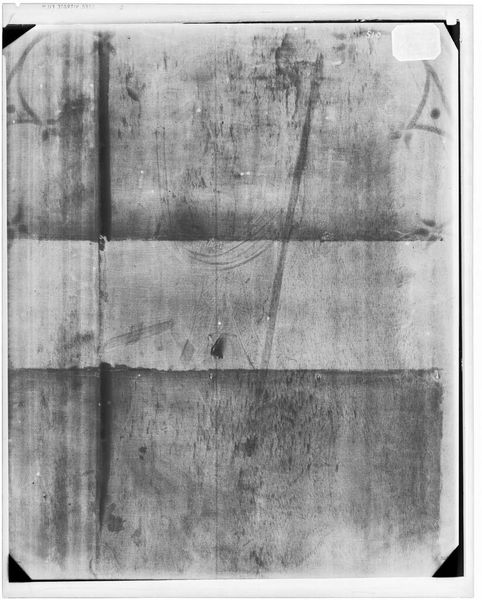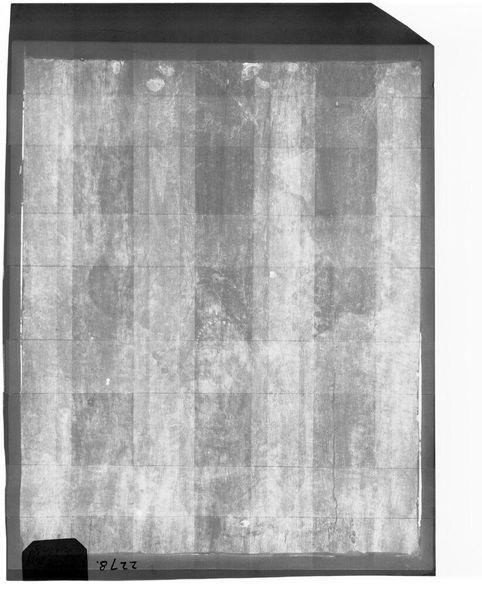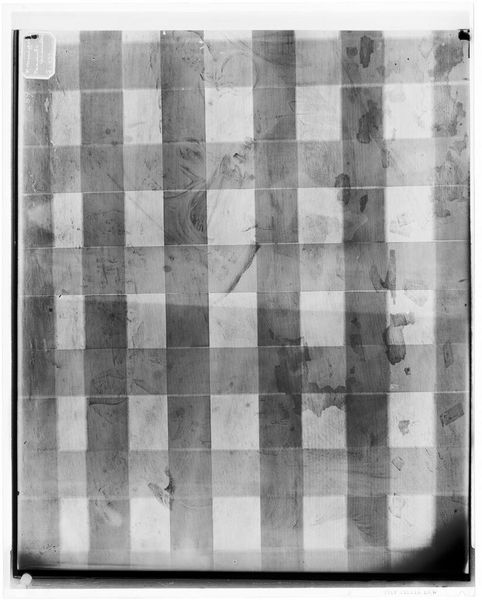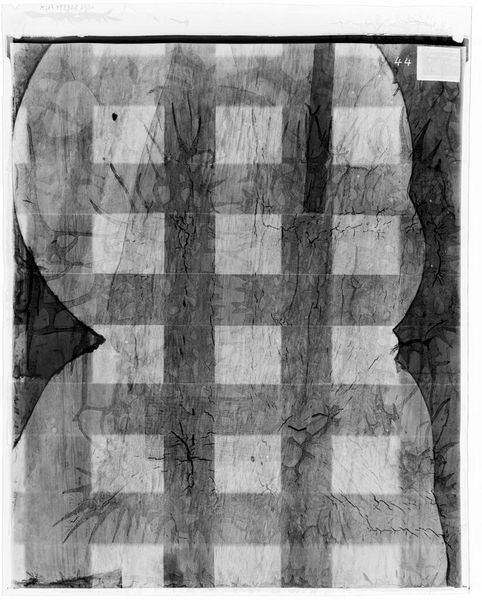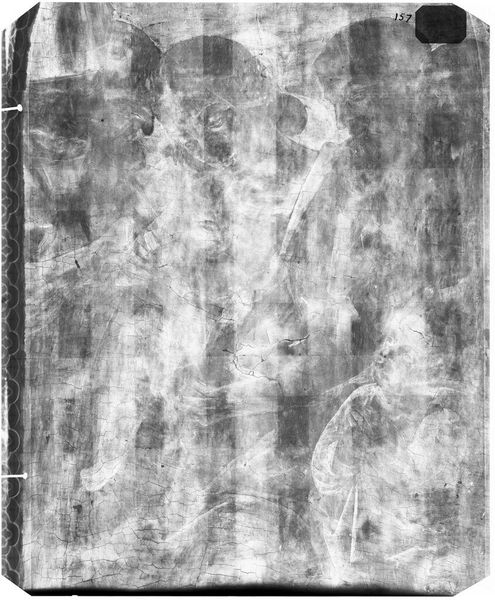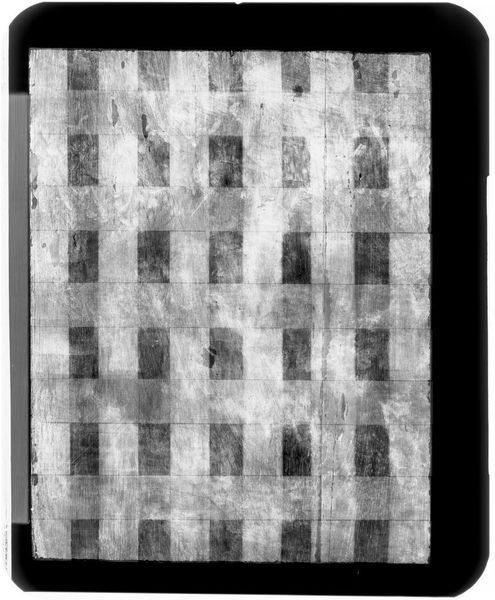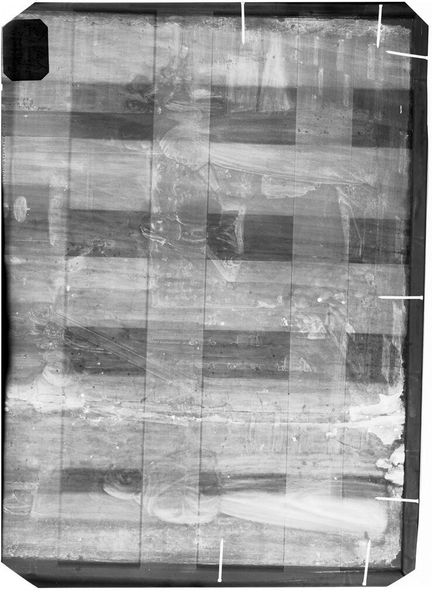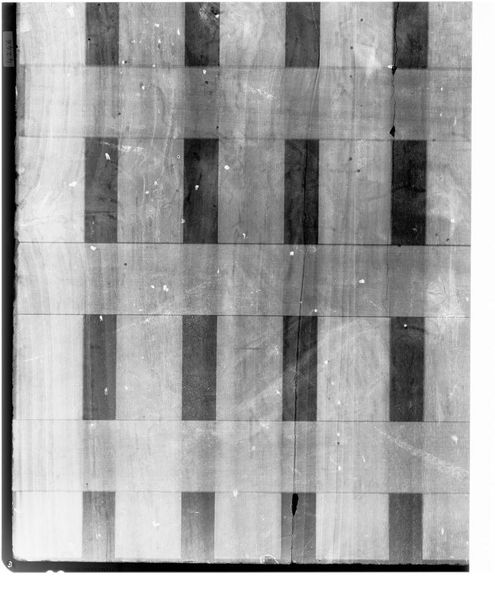
X-radiograph(s) of "Crucifixion"
Dimensions: film size: 14 x 17
Copyright: CC0 1.0
Editor: This is an x-radiograph of "Crucifixion" by Lorenzo Monaco, part of the Harvard Art Museums collection. It looks like a grid of dark and light rectangles. What does an x-ray reveal about the art and its history? Curator: X-radiography offers a behind-the-scenes look at the materials and methods used to create a painting. It allows us to understand the cultural values and institutional practices surrounding its creation, preservation and study. Editor: So, by analyzing the materials, we can learn more about the social context of the art? Curator: Precisely. Materials and techniques often reflect available resources, artistic training, and even the economic or political climate of the time. Think of it as a material record of the artist's world. Editor: That's a really interesting way to look at it. I never thought about the socio-political forces in the literal components of art. Curator: Indeed, and the X-ray also exposes the choices made by restorers throughout its lifespan, a physical record of institutional interventions that shape how we perceive the art today. Editor: I see. So, an x-ray becomes another layer in understanding the complex life of this piece!
Comments
No comments
Be the first to comment and join the conversation on the ultimate creative platform.
